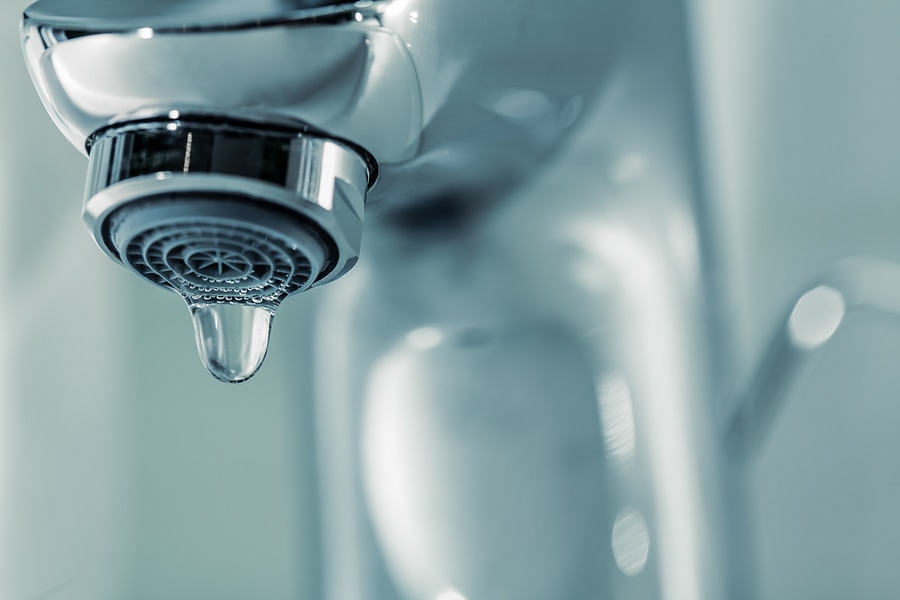Our Benefits of Fixing a Broken Faucet
Our Benefits of Fixing a Broken Faucet
Blog Article
They are making a few great observations relating to Leaky Faucets: Why They Happen & What to Do About Them overall in the article down the page.

Dripping faucets may appear like a minor hassle, however their influence surpasses just the inconvenience of the noise. From drainage to incurring unneeded monetary expenses and health and wellness threats, overlooking a dripping faucet can result in different repercussions. In this write-up, we'll look into why it's crucial to address this usual household issue without delay and efficiently.
Wastefulness of Water
Environmental Impact
Dripping faucets add significantly to water wastefulness. According to the Environmental Protection Agency (EPA), a solitary faucet leaking at one drip per secondly can lose greater than 3,000 gallons of water annually. This not only pressures water sources however likewise impacts communities and wildlife dependent on them.
Financial Costs
Increased Water Bills
Past the ecological effect, trickling taps can pump up water expenses substantially. The accumulated wastage with time converts into higher energy costs, which could have been stayed clear of with prompt repair work.
Potential Home Damage
In addition, long term leaking can lead to harm to fixtures and surface areas surrounding the tap. Water build-up can cause discoloration, rust, and also architectural issues if left ignored, resulting in added repair expenses.
Health and wellness Issues
Mold and Mildew Development
The consistent existence of dampness from a leaking faucet creates an ideal atmosphere for mold and mildew and mildew development. These fungi not just compromise indoor air top quality but additionally position health and wellness risks, especially for individuals with respiratory system conditions or allergic reactions.
Waterborne Diseases
Stagnant water in trickling faucets can end up being a breeding place for microorganisms and other virus, increasing the danger of waterborne conditions. Contaminants such as Legionella germs grow in stagnant water, possibly leading to major health problems when consumed or breathed in.
DIY vs. Expert Fixing
Advantages and disadvantages of Do It Yourself Fixing
While some may attempt to repair a trickling tap themselves, do it yourself repairs come with their own set of difficulties. Without correct expertise and tools, DIY attempts can worsen the problem or result in insufficient repair services, lengthening the trouble.
Advantages of Hiring a Professional Plumber
Employing an expert plumber makes sure that the underlying source of the trickling tap is dealt with successfully. Plumbing professionals have the proficiency and equipment to diagnose and repair tap concerns successfully, conserving time and decreasing the danger of further damage.
Step-by-Step Guide to Dealing With a Dripping Tap
Devices Needed
Before attempting to fix a dripping tap, collect the required tools, consisting of a flexible wrench, screwdrivers, replacement parts (such as washers or cartridges), and plumber's tape.
Usual Tap Issues and Their Solutions
Determine the type of tap and the certain problem triggering the drip. Typical issues include damaged washers, corroded shutoff seats, or malfunctioning O-rings. Refer to manufacturer guidelines or on the internet tutorials for step-by-step advice on repair services.
Preventive Measures
Normal Upkeep Tips
To prevent trickling taps, carry out routine upkeep such as cleaning aerators, evaluating for leaks, and changing worn-out components immediately. Additionally, take into consideration setting up water-saving devices or updating to more reliable fixtures.
Relevance of Prompt Repairs
Resolving leaking taps as soon as they're seen avoids more water wastage and possible damage, inevitably saving both water and money in the future.
Impact on Property Value
Assumption of Well-Maintained Home
Keeping a residential property in good condition, including attending to upkeep issues like leaking taps, boosts its perceived worth and charm amongst prospective customers or occupants.
Impact on Resale Worth
Characteristics with well-maintained plumbing fixtures, consisting of taps, command higher resale values in the realty market. Attending to trickling taps can contribute to a positive perception throughout property evaluations and settlements.
Ecological Responsibility
Private Contribution to Conservation
Taking responsibility for repairing leaking taps lines up with wider initiatives towards water preservation and ecological sustainability. Every person's activities collectively make a considerable effect on protecting valuable resources.
Sustainable Living Practices
By prioritizing timely repair work and embracing water-saving practices, individuals contribute to sustainable living techniques that profit both present and future generations.
Final thought
Attending to a leaking faucet goes beyond mere convenience; it's an important step towards preserving water, decreasing financial costs, and safeguarding wellness and property. Whether via do it yourself repair work or professional assistance, doing something about it to deal with leaking taps is a little yet impactful way to advertise accountable stewardship of resources and add to a much healthier, much more lasting future.
How to Fix a Leaky Faucet: Step-by-Step Repair Guide
A leaky faucet may seem like a simple annoyance, but if it's not fixed promptly, that leak could cost hundreds to potentially thousands. From water damage to mold, mildew, and high water bills, even a tiny leak can be catastrophic if left unattended. Damage like this can even affect the overall value of your home, so it's important to take the right approach for leaky faucet repair. You may need the help of a plumber in some cases, but we've got a few tips you can try on how to fix a leaky faucet before calling the pros.
Four Faucet Types
When you're learning how to fix a leaky faucet, the first step is knowing what kind of faucet you're working with! There are four common types.
Cartridge Faucets
Cartridge faucets come in one- or two-handled varieties. In one-handled cartridge faucets, hot and cold water combines in a single cartridge. In the two-handled versions, hot and cold water are controlled separately and mixed in the faucet.
Ball Faucets
Ball faucets have a single lever you push up and down to adjust the pressure and rotate to change the temperature. A slotted metal ball controls the amount of water allowed into the spout.
Compression Washer Faucets
They're the oldest type of faucet, but they're still used in many homes — especially older ones. Compression faucets have two separate handles that, when turned, raise or lower the washer that seals a water valve. This valve stops water from flowing through the faucet when it is turned off.
Disc Faucets
Disc faucets rarely need to be repaired due to their maintenance-free design. The water flow is controlled by two discs — the upper one raises and lowers against a fixed lower disc, creating a watertight seal. If your disc faucet starts leaking, you may need to replace the seals or clean residue buildup from the inlets.
Fixing a Leaky Faucet
Step 1: Turn Off the Water
Whether you're learning how to fix a leaky bathtub faucet or how to fix a leaky kitchen faucet, always turn off the water supply to your working area when you're fixing a leak. The last thing you want is a flood added to your list of things to fix.
Look for the shutoff valves below your sink or around the tub and turn them clockwise to stop the water flow. If your faucet doesn't have shutoff valves, you may need to turn off the water for the whole house. Check to make sure it's off by turning the faucet on. If nothing comes out, you're ready to start the repair.
Step 2: Take Apart the Faucet
How you disassemble your faucet depends on the type of fixture you have. You can use a flathead screwdriver to remove the caps on top of the handle or handles for cartridge and compression faucets. Inside, you should see handle screws. Unscrew these with a screwdriver to remove the handle.
Disc- and ball-style faucets will typically have an inlet screw near the handle, and removing that will reveal the interior of the faucet.
Detach the Valve Stem
For cartridge- and compression-style faucets, you'll see the inner valve stem or cartridge once you remove the faucet handles. If you have a compression faucet, unscrew the brass valve stem. If you have a cartridge faucet, pull out the cartridge. If your cartridge has been in place for a while, it may require some tools or extra force to remove it due to mineral deposits.
Examine and Replace Parts
Once you've removed the parts, check them out to confirm what needs to be replaced. You may see corroded rubber washers, O-rings, stems, or cartridges. On a ball-style faucet, check the seats and springs for damage.
If you need to repair a leaky disc faucet, check the inlet and seals on the lower disc.
Once you determine what parts must be replaced, visit your local hardware store. Bring the damaged parts with you to ensure you can purchase the correct components to replace them.
Clean Valves and Faucet Cavity
If you've removed a stem or cartridge, you may notice mineral buildup in the faucet's threads. Use white vinegar to clean the valve seat by soaking it for a few minutes, then scrub it away with a soft toothbrush and rinse with warm water. You can also clean the interior of the faucet in the same way.
Reassemble the Faucet
Once your faucet is cleaned and the required parts have been replaced, it's time to reassemble it. Put the pieces back together and slowly turn the water supply back on. Doing this slowly is crucial because too much initial water pressure can damage the new hardware you've just installed.
https://homewarranty.firstam.com/blog/how-to-fix-leaky-faucet

I was made aware of that editorial about Why It's Important to Fix Leaky Faucets from an associate on a different web property. In case you appreciated our page kindly do not forget to share it. We truly appreciate your readership.
Report this page